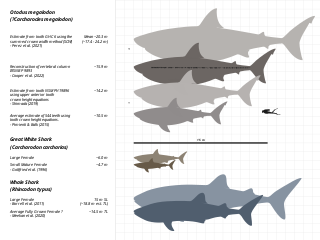In mathematics, a subset of a topological space is called nowhere dense or rare if its closure has empty interior. In a very loose sense, it is a set whose elements are not tightly clustered anywhere. For example, the integers are nowhere dense among the reals, whereas an open ball is not.
In mathematics, a negligible set is a set that is small enough that it can be ignored for some purpose. As common examples, finite sets can be ignored when studying the limit of a sequence, and null sets can be ignored when studying the integral of a measurable function.

In mathematics, and particularly in set theory, category theory, type theory, and the foundations of mathematics, a universe is a collection that contains all the entities one wishes to consider in a given situation.
Order theory is a branch of mathematics that investigates the intuitive notion of order using binary relations. It provides a formal framework for describing statements such as "this is less than that" or "this precedes that". This article introduces the field and provides basic definitions. A list of order-theoretic terms can be found in the order theory glossary.
In mathematics, the support of a real-valued function is the subset of the domain containing the elements which are not mapped to zero. If the domain of is a topological space, the support of is instead defined as the smallest closed set containing all points not mapped to zero. This concept is used very widely in mathematical analysis.
In number theory, natural density is one method to measure how "large" a subset of the set of natural numbers is. It relies chiefly on the probability of encountering members of the desired subset when combing through the interval [1, n] as n grows large.
A subset of a topological space has the property of Baire, or is called an almost open set, if it differs from an open set by a meager set;
In combinatorial mathematics, a large set of positive integers
In mathematics, a syndetic set is a subset of the natural numbers, having the property of "bounded gaps": that the sizes of the gaps in the sequence of natural numbers is bounded.
In mathematics, a thick set is a set of integers that contains arbitrarily long intervals. That is, given a thick set , for every , there is some such that .
In mathematics, an IP set is a set of natural numbers which contains all finite sums of some infinite set.
In combinatorics, a branch of mathematics, partition regularity is one notion of largeness for a collection of sets.
In mathematics, Smale's axiom A defines a class of dynamical systems which have been extensively studied and whose dynamics is relatively well understood. A prominent example is the Smale horseshoe map. The term "axiom A" originates with Stephen Smale. The importance of such systems is demonstrated by the chaotic hypothesis, which states that, 'for all practical purposes', a many-body thermostatted system is approximated by an Anosov system.
In mathematics, properties that hold for "typical" examples are called generic properties. For instance, a generic property of a class of functions is one that is true of "almost all" of those functions, as in the statements, "A generic polynomial does not have a root at zero," or "A generic square matrix is invertible." As another example, a generic property of a space is a property that holds at "almost all" points of the space, as in the statement, "If f : M → N is a smooth function between smooth manifolds, then a generic point of N is not a critical value of f."
Ergodic Ramsey theory is a branch of mathematics where problems motivated by additive combinatorics are proven using ergodic theory.
In topology and related areas of mathematics, a subset A of a topological space X is said to be dense in X if every point of X either belongs to A or else is arbitrarily "close" to a member of A — for instance, the rational numbers are a dense subset of the real numbers because every real number either is a rational number or has a rational number arbitrarily close to it. Formally, is dense in if the smallest closed subset of containing is itself.
In mathematics, a Meyer set or almost lattice is a set relatively dense X of points in the Euclidean plane or a higher-dimensional Euclidean space such that its Minkowski difference with itself is uniformly discrete. Meyer sets have several equivalent characterizations; they are named after Yves Meyer, who introduced and studied them in the context of diophantine approximation. Nowadays Meyer sets are best known as mathematical model for quasicrystals. However, Meyer's work precedes the discovery of quasicrystals by more than a decade and was entirely motivated by number theoretic questions.
In axiomatic set theory, the Rasiowa–Sikorski lemma is one of the most fundamental facts used in the technique of forcing. In the area of forcing, a subset E of a poset is called dense in P if for any p ∈ P there is e ∈ E with e ≤ p. If D is a family of dense subsets of P, then a filter F in P is called D-generic if

Size in general is the magnitude or dimensions of a thing. More specifically, geometrical size can refer to linear dimensions, area, or volume. Size can also be measured in terms of mass, especially when assuming a density range.